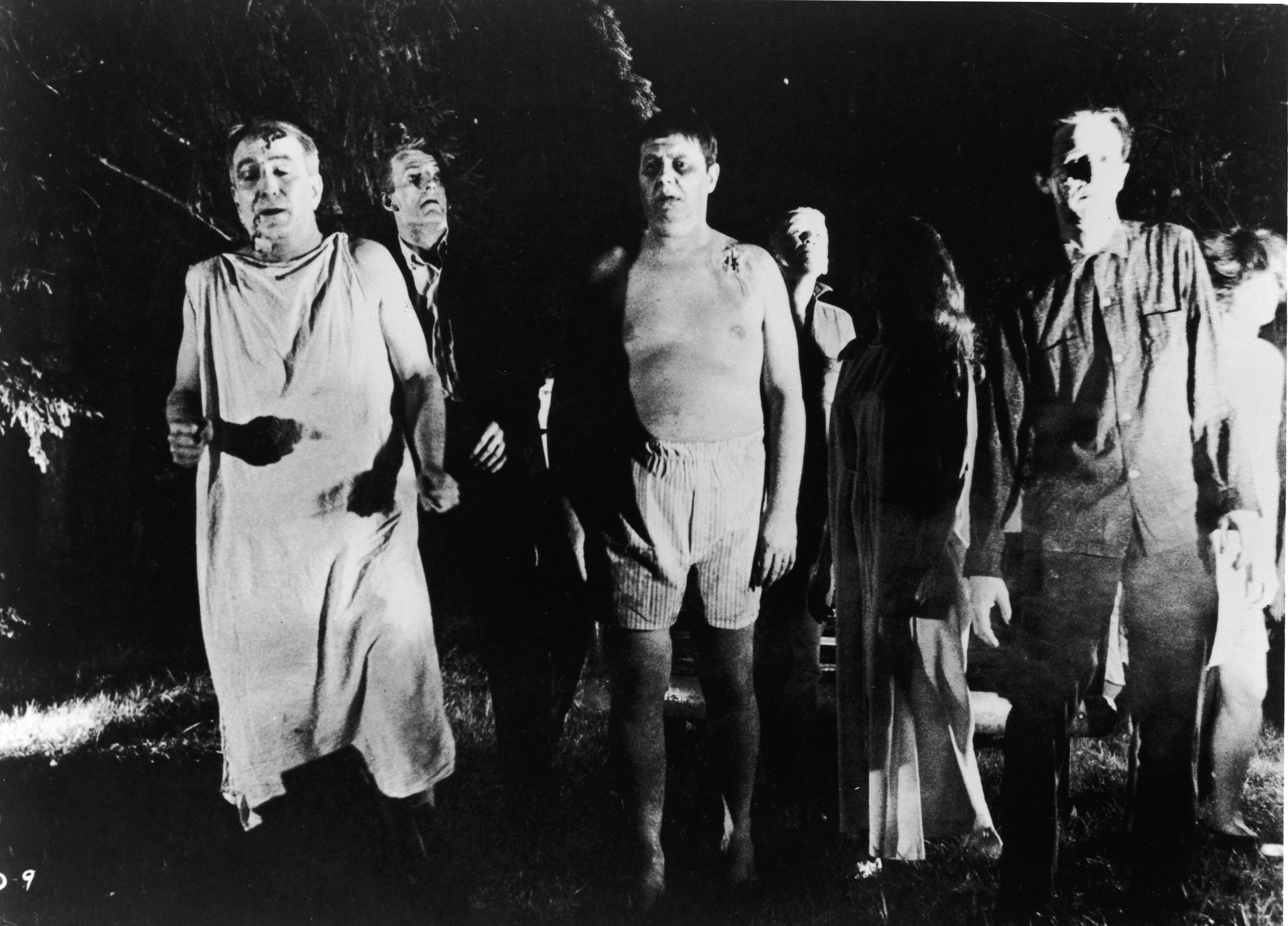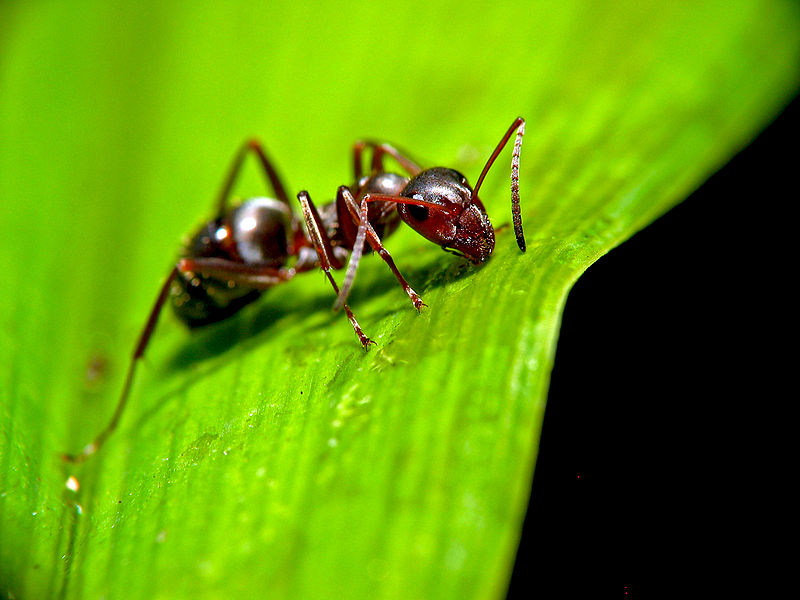Parasites and zombies both want braaaiiiiins

‘Parasites! Get away from our brains!’
It starts off as an urge. You’re not sure why, but you’re craving something. Soon it starts to take hold- it’s all you can think about. It starts to make you mad, you can’t take it any more. You have to do this thing, something in your head is telling you. You can’t let go of it, and gradually your own free will fades and you become a mindless slave. Your life is over.
The above could be a paragraph describing the infection wrought by the Cordyceps genus of parasitic fungus that is at the heart of the apocalypse in the Playstation 3 game The Last of Us. The game, critically acclaimed, has also been welcomed because it is based on a real life parasitic fungus.
It also helps to remind us all of just how amazing (and scary) nature really is.
But have you heard about the other things in nature that can turn animals into zombies by targeting the brain and changing behaviour?
If you think of your standard zombie apocalypse, it can be summarised in these three points:
- An infection of some kind is the causative agent
- This infection changes their behaviour to make them more aggressive, and want to bite/eat other humans
- When a non-infected human gets bitten, they too get the infection and their behaviour is changed.
Well guess what.....nature already does that. Luckily Mother Nature isn’t a patent troll, so Romero can keep his cash. Here's a look at a few of the behaviour-altering parasites from nature that you (probably) have never heard of.
Toxoplasma gondii
Unlucky victims – Rodents
A parasite that can only sexually reproduce in cats, when T.gondii infects a rodent (which can be done through eating infected cat faeces or anything that has touched it), it needs to find a way to get back into a cat. Cue a little behavioural change in the rodent. Experiments have shown that infected rodents are less averse to cat odours than normal, thereby increasing their chance of getting caught by a cat. Good for T.gondii, bad for mousey.
Other warm-blooded mammals can be infected by ingesting infected substances, including humans. Although rodents are the only species that seems to undergo a severe behavioural change, it is thought that T.gondii has been responsible for schizophrenia and depression in humans.

Euhaplorchis californiensis
Unlucky victims - Killifish
Known as a ‘brain-encysting trematode’, this parasite’s lifecycle is: shorebird- hornsnail- killifish. After sexually reproducing and finishing its lifecycle in a shorebird, its eggs are released in the bird’s droppings. Hornsnails, which consume the droppings (as they graze) act as the first intermediary host.
The consumed parasites inhibit the unlucky snail’s sex drive by castrating it (yes, that’s not a typo). They then replicate (asexually) inside the snail. As the parasitic larvae mature, they break out of the snail and swim freely in the water, until they find their 2nd intermediary host- the killifish.
Once in the killifish, the parasites alter the fish’s behaviour to make it 30 times more likely to be caught by a bird and eaten, thus completing the lifecyle of the parasite (read more on this gruesome lifecyle or watch a documentary that could be a horror film).
Interestingly, the mechanism is similar to the T.gondii parasite- it supresses a common stress response in the fish and also makes them visit the water surface more often, increasing their chances of getting caught by shorebirds.

Dicrocoelium dendriticum
Unlucky victims - Ants
Yes, it’s the poor ant again (they are also a host of the parasitic fungus Cordyceps mentioned earlier), and another Trematode, or parasite worm, or “fluke” as they’re sometimes called.
In this case, the ant is the 2nd intermediary host after a snail, with the primary host being cattle or livestock. Ants use snail trails as a source of moisture, and in doing so can ingest a parasite cyst, full of juvenile flukes….and it then becomes infected.
Most of the parasites stay in the ant’s main body cavity (the haemocoel) whilst they mature. However some travel to a cluster of nerve cells near the ant’s esophagus. There they manipulate the ant. How? At dusk, as the air cools and sun retreats, the infected ant will leave its colony, go find a tall grass stem, clamp its mandibles and stay there until dawn. At dawn the ant regains control and goes about its daily business as usual (to stay there in the sun would be death for both ant and parasite). When night falls, it repeats this morbid behaviour. The reason? At the top of a grass stem, it is more likely to be eaten by grazing cattle, and the parasite then completes its lifecycle.
The unlucky news for us is that humans can also get infected, through eating undercooked infected animal liver. This leads to a ‘pseudoparasite’ infection, because it is temporary- the parasites will survive in the intestine but be released from the body by defecation. For a more serious infection, you’d need to eat the two intermediary hosts- snails or ants (seriously, it can happen- drinking water with an ant in it or eating raw salad or vegetables containing infected ants).

And so ends our trip amongst a few lesser known parasites that alter behaviour. If we look back at our ‘zombie-checklist’ from earlier:
- An infection is the causative agent- check, in these cases a lovely parasite.
- Behaviour altering? Yep.
- Biting spreads the infection. Ok so not really, but hey - two out of three ain’t bad (as Meatloaf sang).
Ok, so there are some differences. For one, in no instance are any hosts ‘dead’ but still functioning- they’re always alive. Also none of them cause their hosts to start eating their friends- but once you move past that you’ll see what you thought were the realms of fantasy are actually grounded firmly in reality. And despite two of the three being known to infect humans, as we are not standard hosts for these parasites the effect they have (if any) is wildly different to what they do during their natural lifecycle, so you shouldn't be too worried about seeing a human zombie shuffle past any time soon.
There are probably some of you who have been shouting and screaming throughout this article, “What about Rabies!?”. Well, you’d be right. The rabies virus does present itself as a very likely source for zombies and, perhaps surprisingly, vampires, in popular culture.
The fact is, it’s quite surprising that The Last of Us is really the first big game to utilise parts of nature like this, because when you look at it, there really are some weird, funky and downright gruesome things that happen in the natural world- all, oddly enough, in the name of survival - just not the host’s survival.